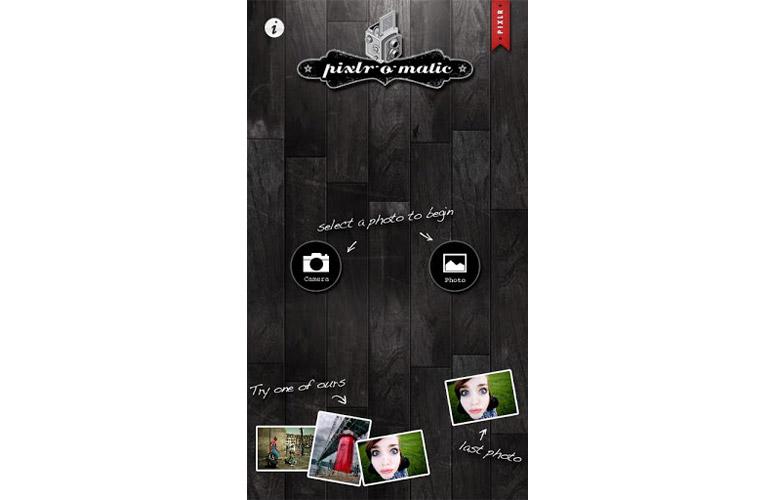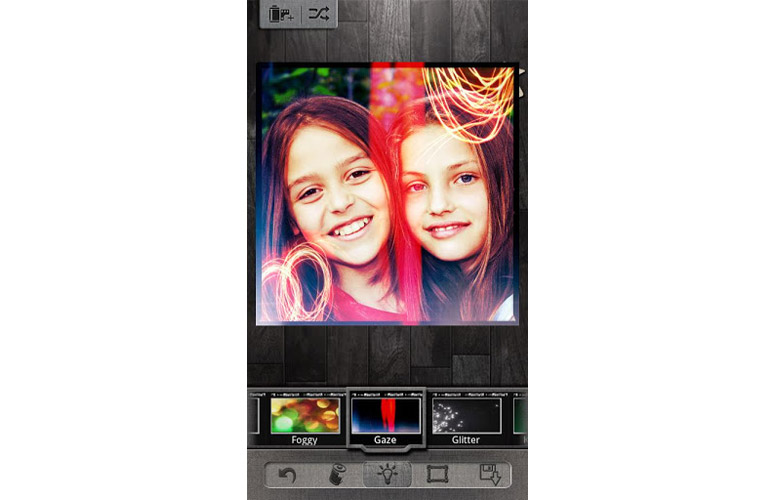Laptop Mag Verdict
Pixlr Express is jam-packed with options for image adjustments and effects, but it may take you more taps to get the results you want.
Pros
- +
Easy-to-navigate interface
- +
Drills deeper to provide fine-tuning
- +
Lets you upload pictures at a preset resolution
Cons
- -
Auto Fix for exposure correction doesn't work well
- -
Many filters and effects require an additional download
Why you can trust Laptop Mag
Autodesk's Pixlr Express combines the Flash-based Web image editor with the company's first app, Pixlr-o-matic, an Instagram-esque repository of filters and effects. Pixlr Express adds a variety of versatile tools, and lets you save images right to the cloud -- a must for anyone editing photos on the go.
Interface
Like Snapseed and Adobe Photoshop Touch, Pixlr Express is available as a free download for both Android and iOS. (We tested version 1.2 on Android). As you might expect, there are slight differences between the two versions. For instance, in the Android version, you can choose the default folder for saving images.
Click to EnlargeWhen you first open Pixlr Express, you're presented with two options: Take a Photo, or Choose a Photo. With Take a Photo, you'll go into your device's Camera app and then return to Pixlr to continue to edit the image.
MORE: Best Apps 2013
Choose a Photo lets you grab an image from Dropbox or Google's native Gallery app. Beneath the image are six editing options: Adjustment, Effect, Overlay, Border, Text and Sticker. Tap on one of those options to reveal a list of editing options, each of which is presented as an icon in a clearly labeled, easy-to-identify fashion. For example, tapping on Adjustment gives you 14 additional adjustments, including crop, rotate, autofix, color, vibrance, contrast, blur, sharpen, denoise and redeye.
Click to EnlargeOf the core six editing options, only Adjustment comes baked into the app. Effects, borders, overlays, text and stickers all require additional downloads. This approach saves precious space on your device, but it also means that if you want more than the one or two preloaded variants, you'll need to go through additional in-app installs.
Sign up to receive The Snapshot, a free special dispatch from Laptop Mag, in your inbox.
Performance
Once you select an adjustment, you then drill deeper into the actual elements you can control. For example, to change the color on an image, tap on Hue, and then adjust the pop-up slider to taste. Then, repeat those actions for Saturation and Lightness.
Click to EnlargePixlr offers a fair amount of control over various aspects of image adjustments, which is useful if you like to tinker with an image. However, one of the most critical capabilities -- Auto Fix for one-tap exposure correction -- tended to be a bit too aggressive. It frequently changed the exposure dramatically, in a way that wasn't true to the image's reality -- and wasn't an improvement over the original.
Some effects are harder to figure out how to apply. Color Splash -- which, as its name implies, adds a touch of color to your image -- is not intuitive. In contrast, this effect was easy to use on Aviary. And effects are sometimes nested, requiring several taps to reveal all the options.
Click to EnlargeOther effects are simply brilliant in their simplicity -- and alluring in how you can creatively adjust your image. Take Focal Blur: You can control both the focal point and the width of a concentric circle for the blur effect, and decide whether you want the blur to be linear or circular.
As with other apps, such as Aviary, you can't change either the crop of an image or its orientation while retaining a specific aspect ratio (for example, when cropping a landscape image to a portrait orientation).
Also, like other free apps, Pixlr Express shows you a low-res thumbnail of the image you're editing. That's fine for image previews, but for the actual edits, it's difficult to tell whether a crop is too tight, or how much to denoise an image when all you're seeing on-screen is the pixelated low-res version.
When you save an image, you first choose whether to share the image via another app, or save the image directly into your Google Gallery. A major boon: You can change the resolution to one of three preset options or to a custom resolution -- a bandwidth-saving trick that avid shooters will appreciate.
Verdict
Autodesk's Pixlr Express is a highly capable image-editing tool. For the most part, it's easy to use, but some aspects of the interface are frustrating, and some of the adjustments -- particularly Auto Fix -- missed their mark entirely. Whereas Snapseed has an elegant, unfettered design, Pixlr Express feels as though it tries to compress too many features into a tight space. Nonetheless, Pixlr makes some of those features worth investigating.
Pixlr Express Specs
| Company Website | http://pixlr.com/ |
| Platforms | Android, iOS |

Melissa Perenson has deep expertise in phones, tablets, e-readers, laptops, monitors, storage, and cameras. She buys way too many of the things she writes about it and has worked as an editor at Forbes Vetted, PCWorld, PCMag, and ZDNet, and as a writer at countless publications, including Laptop Mag, Tom’s Guide, and TechRadar.




